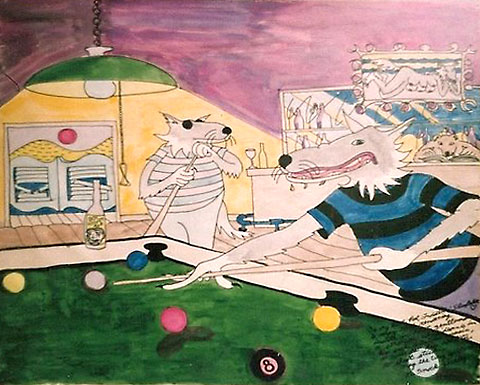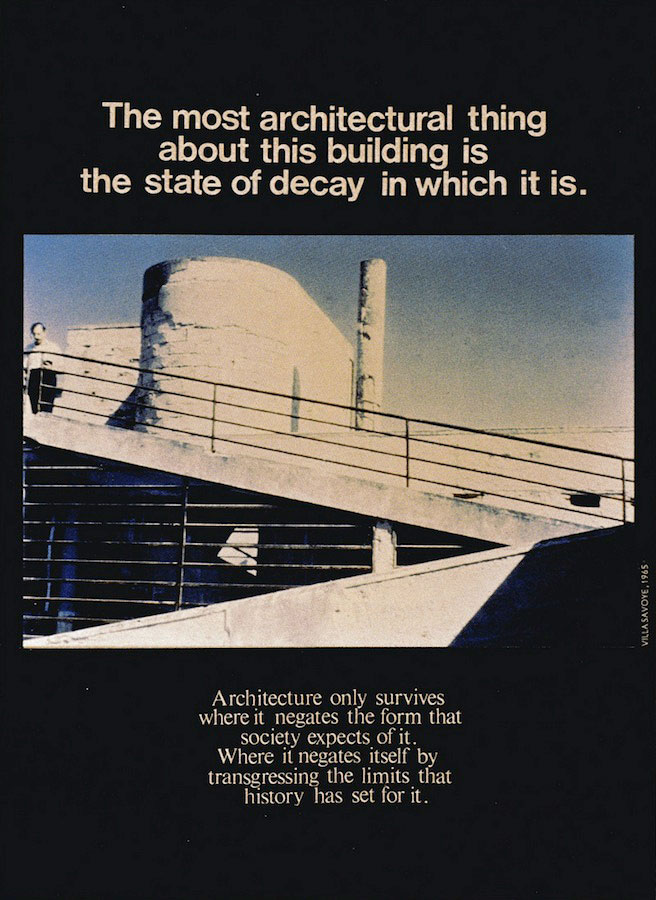
Drawing by Michael Hurley.

Le Corbusier painting a mural on Eileen Gray‘s E-1027 house.
While staying as a guest in the house in 1938 and 1939, Le Corbusier painted bright murals on its plain white walls, sometimes while nude. Infuriated, Gray considered this a defacing of her work and deemed the murals outright vandalism.
Whether he painted his murals out of admiration for Gray’s work or out of jealousy of her accomplishment we still don’t know.

From ‘Advertisements for Architecture’ (1976-77) by Bernard Tschumi.
Tschumi illustrated several of his early theoretical texts with Advertisements for Architecture, a series of postcard-sized juxtapositions of words and images. Each was a manifesto of sorts, confronting the dissociation between the immediacy of spatial experience and the analytical definition of theoretical concepts.

Jan Dibbets, ‘Museum Sokkel met vier hoeken van 90°’ (‘Museum plinth with four corners at an angle of 90°’ (1969)
Dibbets dug out the four corners of the Stedelijk Museum to expose the building’s ‘plinth’.